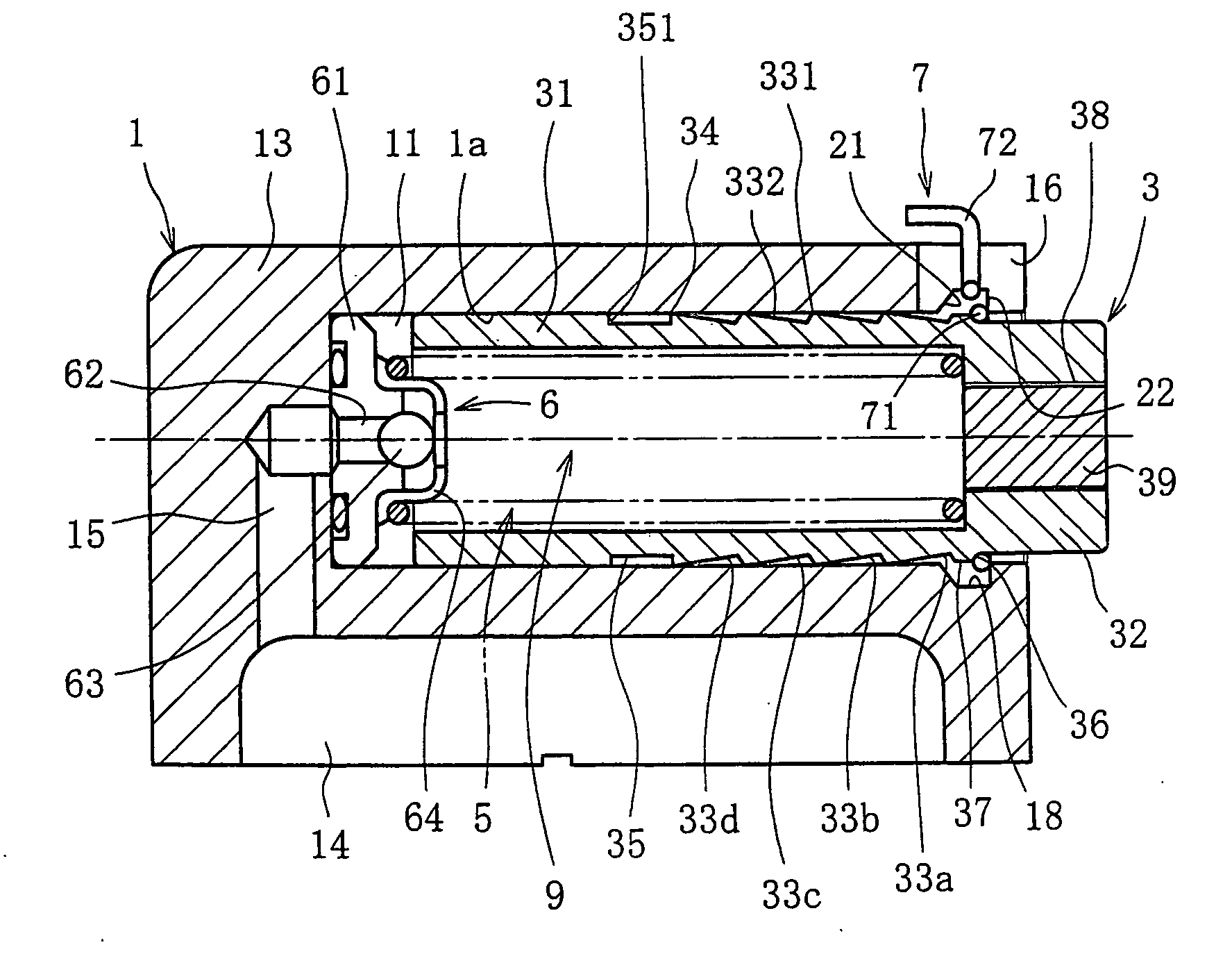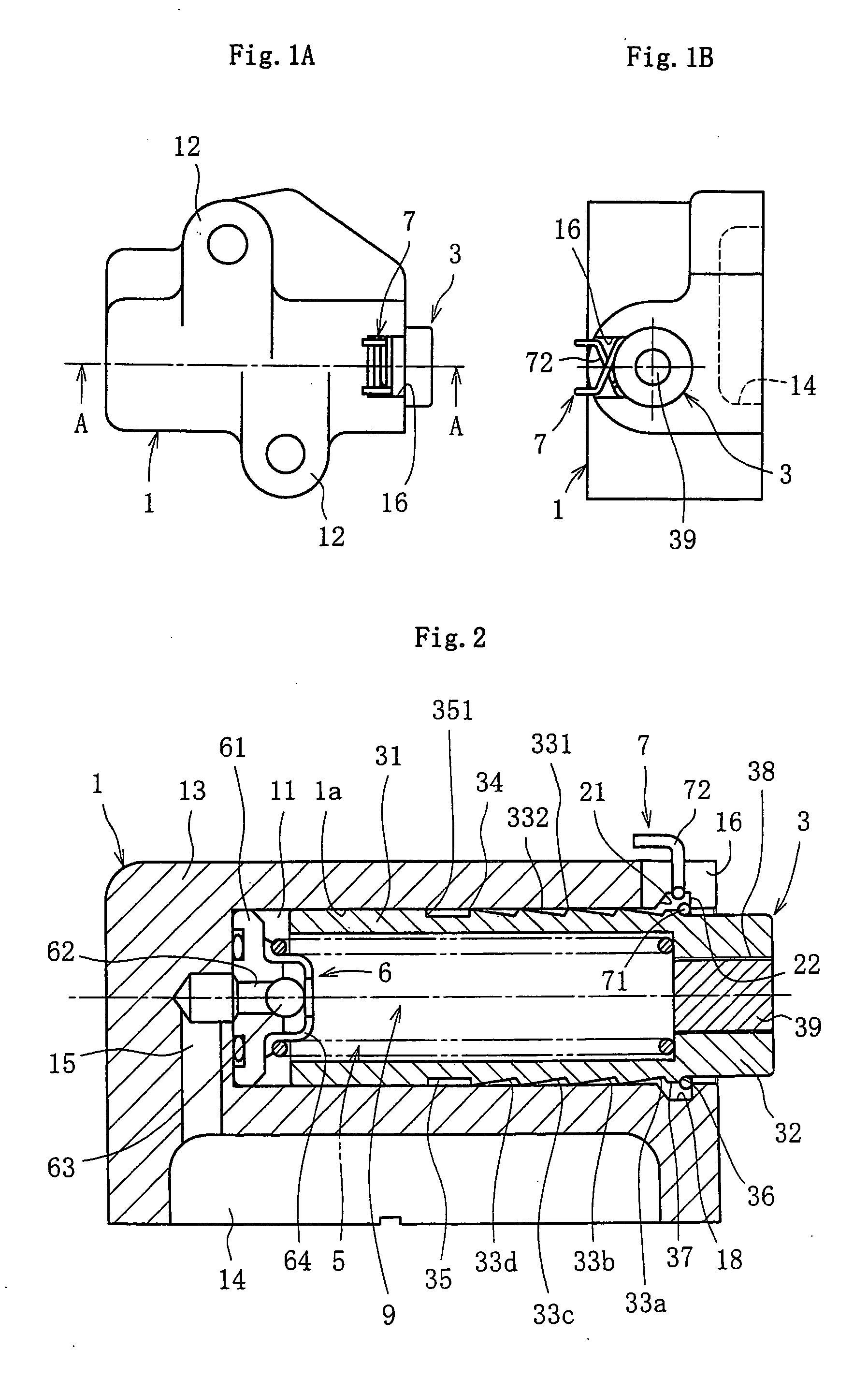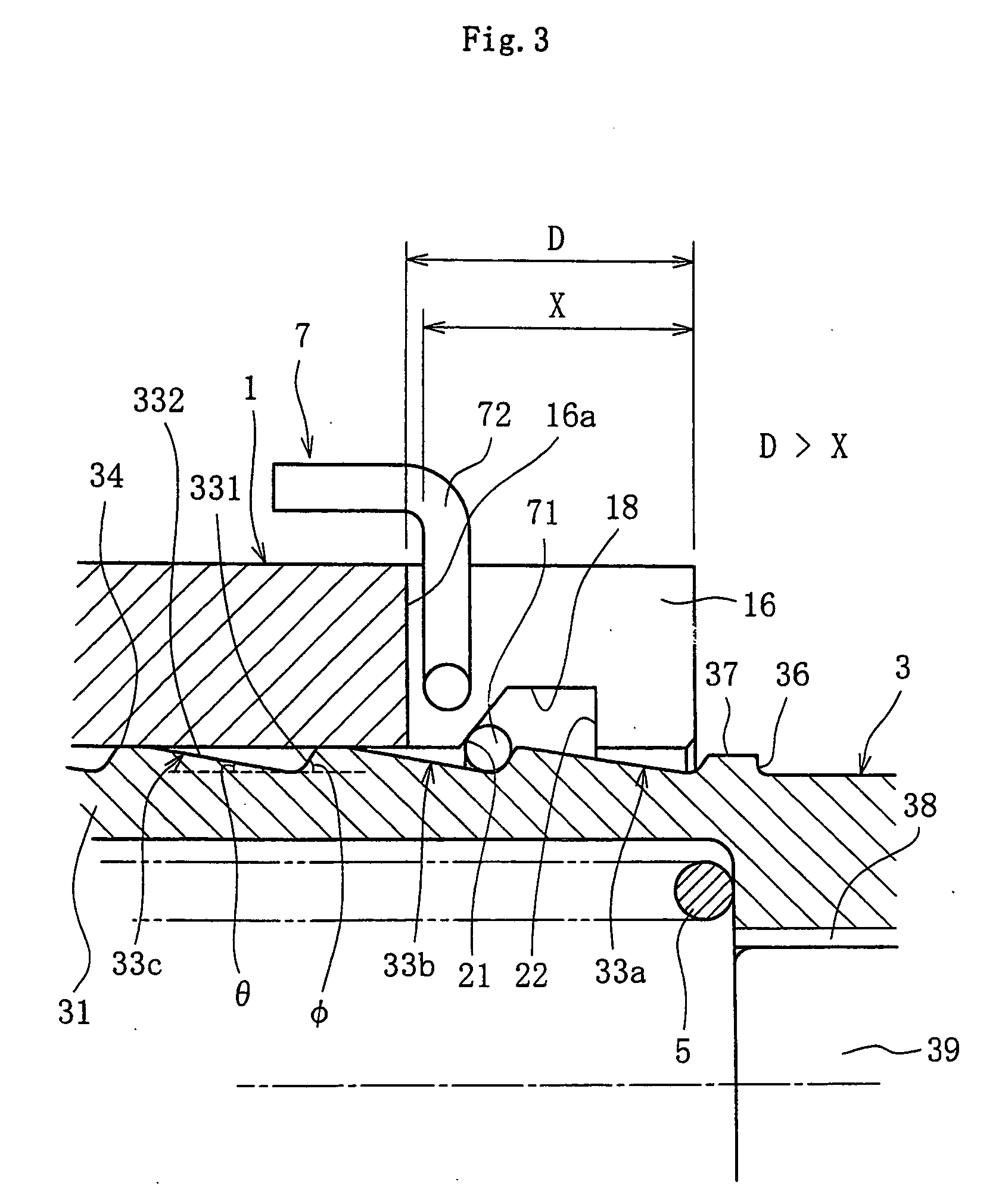Chain tensioner
a chain tensioner and chain technology, applied in the direction of belts/chains/gearings, machines/engines, machines/engines, etc., can solve the problems of reducing damping performance, difficult to machine latching grooves, and affecting the operation of chain tensioners, so as to facilitate the disassembly and maintenance of the chain tensioner, the effect of enhancing operational stability
- Summary
- Abstract
- Description
- Claims
- Application Information
AI Technical Summary
Benefits of technology
Problems solved by technology
Method used
Image
Examples
Embodiment Construction
[0056] Now, preferred embodiments of the present invention will be described below based on FIGS. 1-12.
[0057] Referring now to FIG. 1 and FIG. 2, a chain tensioner according to the present invention is composed of the major components such as a housing 1, a plunger 3 installed in the inner periphery of the housing 1, a return spring 5, a check valve 6 and a resister ring 7 fit on the outer periphery of the plunger 3. Note that in the explanation that follows, the direction the plunger 3 projects is called “front” (right-hand side in FIG. 1A, FIG. 2, FIG. 3, FIGS. 7-9), while the direction the plunger 3 retracts is called “back” (left-hind side in the same figures).
[0058] A hollow cylinder unit 11 for incorporating the plunger 3 is formed in the tubular housing 1 that has a bottom. Mounting portions 12 for mounting on an engine block are formed on both sides of the cylinder unit 11 (see FIG. 1A). An oil supply passage 15 is formed in the bottom 13 of the housing 1 so as to guide op...
PUM
 Login to View More
Login to View More Abstract
Description
Claims
Application Information
 Login to View More
Login to View More - R&D
- Intellectual Property
- Life Sciences
- Materials
- Tech Scout
- Unparalleled Data Quality
- Higher Quality Content
- 60% Fewer Hallucinations
Browse by: Latest US Patents, China's latest patents, Technical Efficacy Thesaurus, Application Domain, Technology Topic, Popular Technical Reports.
© 2025 PatSnap. All rights reserved.Legal|Privacy policy|Modern Slavery Act Transparency Statement|Sitemap|About US| Contact US: help@patsnap.com



